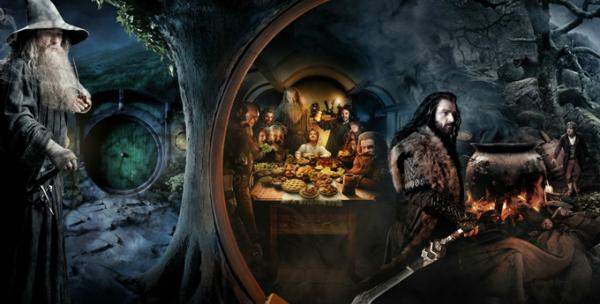Future movies are likely to move much faster than the current 24 frames a second.
As you probably already know, the movie that’s going to be the big groundbreaker with the controversial new format is The Hobbit: An Unexpected Journey, which is due in theaters this December 14.

Peter Jackson’s doing The Hobbit with a new technology? Cool, right? Well the problem is when the footage at a much faster frame rate was screened, the people who saw it weren’t thrilled with it, thinking it looked like videotape.
As Collider puts it, “The high frame rate provides an effect similar to that of a 120 hz HD TV, removing motion blur and giving the action a more fluid and realistic feel.” At least that’s what you hope the audiences get out of it.
Jackson only showed a little bit of footage and wants the final verdict to be over the whole movie, where you immerse yourself in it, instead of a few selected moments. Even Warner Brothers, the studio releasing all three Hobbit films, is treading cautiously, and will only be having the 48 per frame version in a limited run of certain theaters.
The Hobbit will be available in many different formats to choose from, and thankfully, as Collider confirms, you won’t have to pay extra to see it, much like you would have to pay extra to see a movie in 3D or IMAX.
Indeed,, the US theater exhibitors have agreed not to charge extra for the format, and again, Warner Brothers is treading cautiously, but if it’s a hit in 48 frames a second, they’ll expand it to more theaters.
Of course, you willstill have to pay more to see it in 3D, which is to be expected, but thankfully no more for the 48 frames on top of that. Jackson believes 48 frames a second is the way of the future, and indeed, James Cameron will also be releasing his Avatar sequels at this speed.
As Cameron’s producer Jon Landau recently told The Hollywood Reporter, “We have a responsibility to find what tells story in a better way and drives people out of their homes and into the cinema. [With high frame rates], they will walk away having been more engaged in our movies.”
And as genius FX pioneer Douglas Trumbull told Entertainment Weekly, “Mike Todd shot Around the World in 80 Days in 30 frames a second instead of 24. He was the first guy to consciously realize that 24 frames is not enough if you’re going to do a really big, widescreen spectacle. The wider the screen is, the more displacement there is from one from to the next.”
And as Trumbull also pointed out, we’re talking big movies here.
”I wouldn’t apply high frame-rates to a love story or a thriller or a film noir or a mystery,” he continued.






